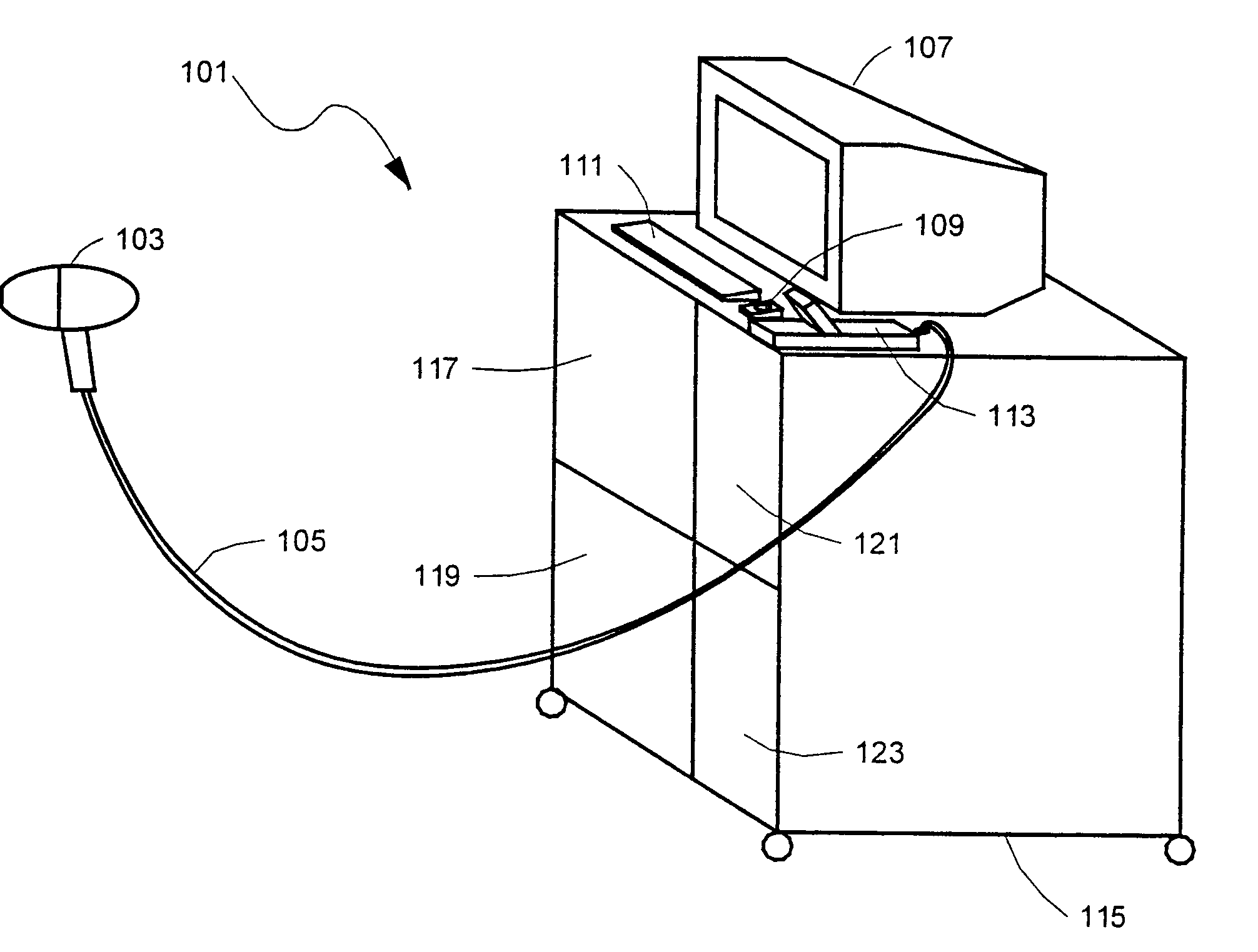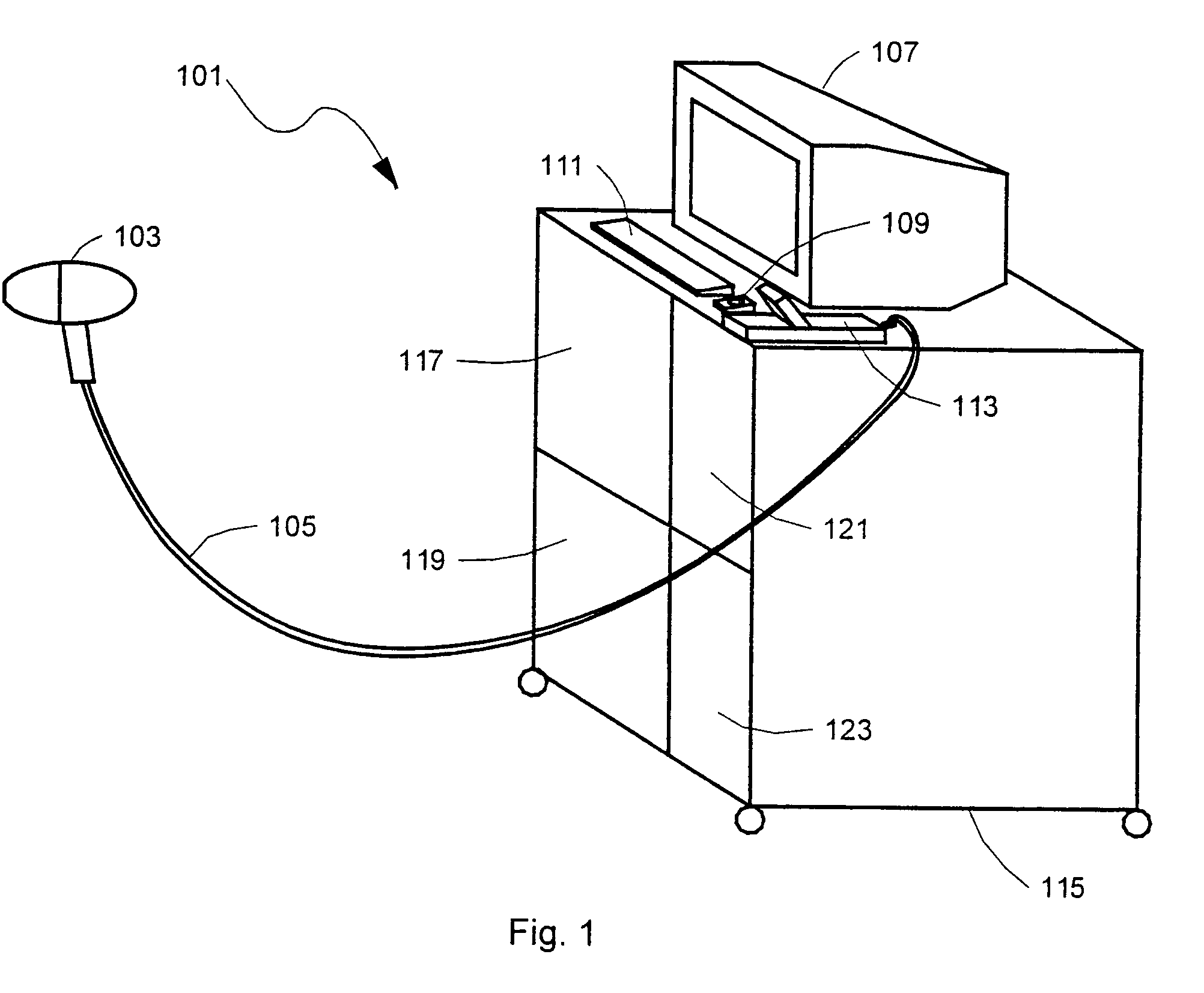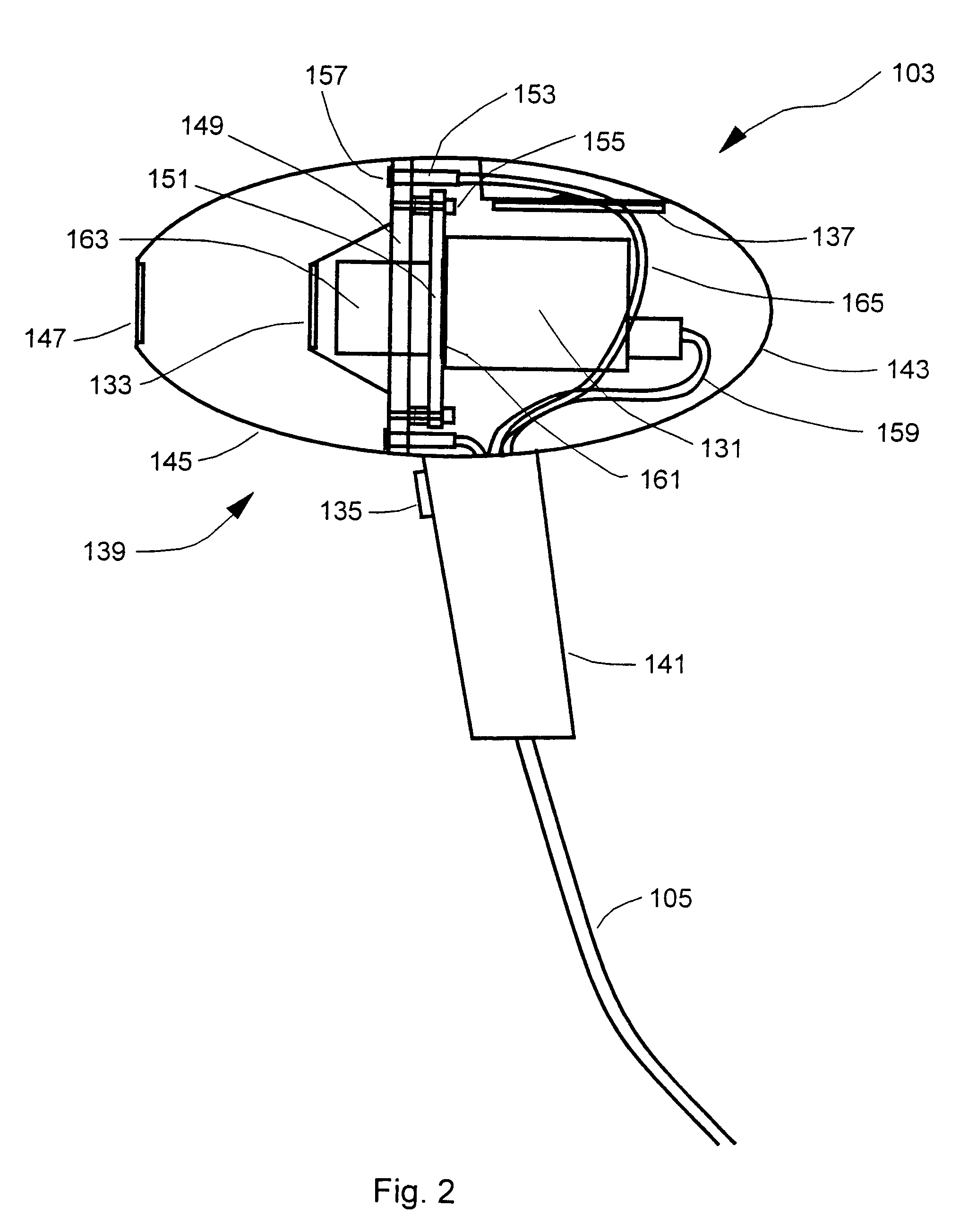System and method for examining, recording and analyzing dermatological conditions
a dermatological condition and system technology, applied in the field of system and method for examining, recording and analyzing dermatological conditions, can solve the problems of scarring and infection risk, ordinary medical practitioners have difficulty in properly assessing a lesion, and significant waste of resources in the community, so as to reduce the contribution of edge factors
- Summary
- Abstract
- Description
- Claims
- Application Information
AI Technical Summary
Benefits of technology
Problems solved by technology
Method used
Image
Examples
Embodiment Construction
[0075]The preferred embodiment of the invention, illustrated in FIG. 1 and bearing numeral 101, uses video technology and includes a hand-held unit 103; a system trolley 115 containing a computer system 119, a printer 117 connected to the computer system, an illumination source 123 and a video camera controller 121; and, on top of the trolley, a computer monitor 107, a keyboard 111, a mouse or pointing device 109, and a camera cradle 113 for the hand-held unit 103. A flexible cable 105 connects the hand-held unit 103 to the system trolley 115.
[0076]As illustrated in FIG. 2, the hand-held unit 103 contains a video camera head 131, an optional inner protective cone and window 133, a trigger switch 135, and an optional miniature computer mouse or pointing device 137. The case 139 of the hand-held unit consists of a handle 141, a main body 143, and a removable outer front cone 145 with window 147. Inside the case there is an internal bulkhead 149, and an adjustable camera mount 151 secu...
PUM
 Login to View More
Login to View More Abstract
Description
Claims
Application Information
 Login to View More
Login to View More - R&D
- Intellectual Property
- Life Sciences
- Materials
- Tech Scout
- Unparalleled Data Quality
- Higher Quality Content
- 60% Fewer Hallucinations
Browse by: Latest US Patents, China's latest patents, Technical Efficacy Thesaurus, Application Domain, Technology Topic, Popular Technical Reports.
© 2025 PatSnap. All rights reserved.Legal|Privacy policy|Modern Slavery Act Transparency Statement|Sitemap|About US| Contact US: help@patsnap.com



